How Tokenomics Influences Market Performance
In the ever-evolving world of cryptocurrencies, one term that often pops up is tokenomics. But what does it really mean, and why does it matter? Tokenomics is not just a buzzword; it’s the backbone of any cryptocurrency project. It encompasses the economic principles that govern a token, including its supply, distribution, and incentives tied to its use. Understanding tokenomics is crucial for investors, developers, and anyone interested in the crypto space. It's like the blueprint of a house: without it, the structure might crumble.
So, how does tokenomics influence market performance? Well, think of it as the fuel that drives the engine of a cryptocurrency. The way a token is structured can lead to increased demand, higher prices, or even market crashes. For instance, if a token has a limited supply and a high utility, it can create a sense of scarcity that drives up its value. Conversely, if a token is inflationary and has no clear use case, it might lead to a decline in its price. This delicate balance between supply and demand is what keeps investors on their toes.
Moreover, tokenomics also plays a significant role in shaping investor sentiment. The psychological aspect of investing cannot be overlooked. When a new project launches with a well-thought-out tokenomics model, it can create excitement and buzz in the community. This excitement often translates into early investments, which can further drive up the price. On the flip side, poorly designed tokenomics can lead to skepticism and hesitation among potential investors, resulting in a lackluster market performance.
In the following sections, we will dive deeper into the various components of tokenomics and how they interact with market dynamics. We'll explore token supply dynamics, the role of governance tokens, and even look at real-world examples to illustrate how these principles play out in practice. By the end of this article, you'll have a comprehensive understanding of how tokenomics influences market performance and why it is essential for anyone looking to navigate the cryptocurrency landscape.
- What is tokenomics? Tokenomics refers to the economic model behind a cryptocurrency, including its supply, distribution, and incentives.
- Why is tokenomics important? It helps determine a token's value and market behavior, influencing investor decisions and market trends.
- How does token supply affect market performance? The total amount of tokens available, inflation rates, and scarcity can significantly impact price movements and stability.
- What are governance tokens? Governance tokens allow holders to participate in decision-making processes, aligning incentives between developers and the community.
- How can I analyze a token's tokenomics? Look at its supply dynamics, utility, distribution mechanisms, and community engagement to gauge its potential market performance.
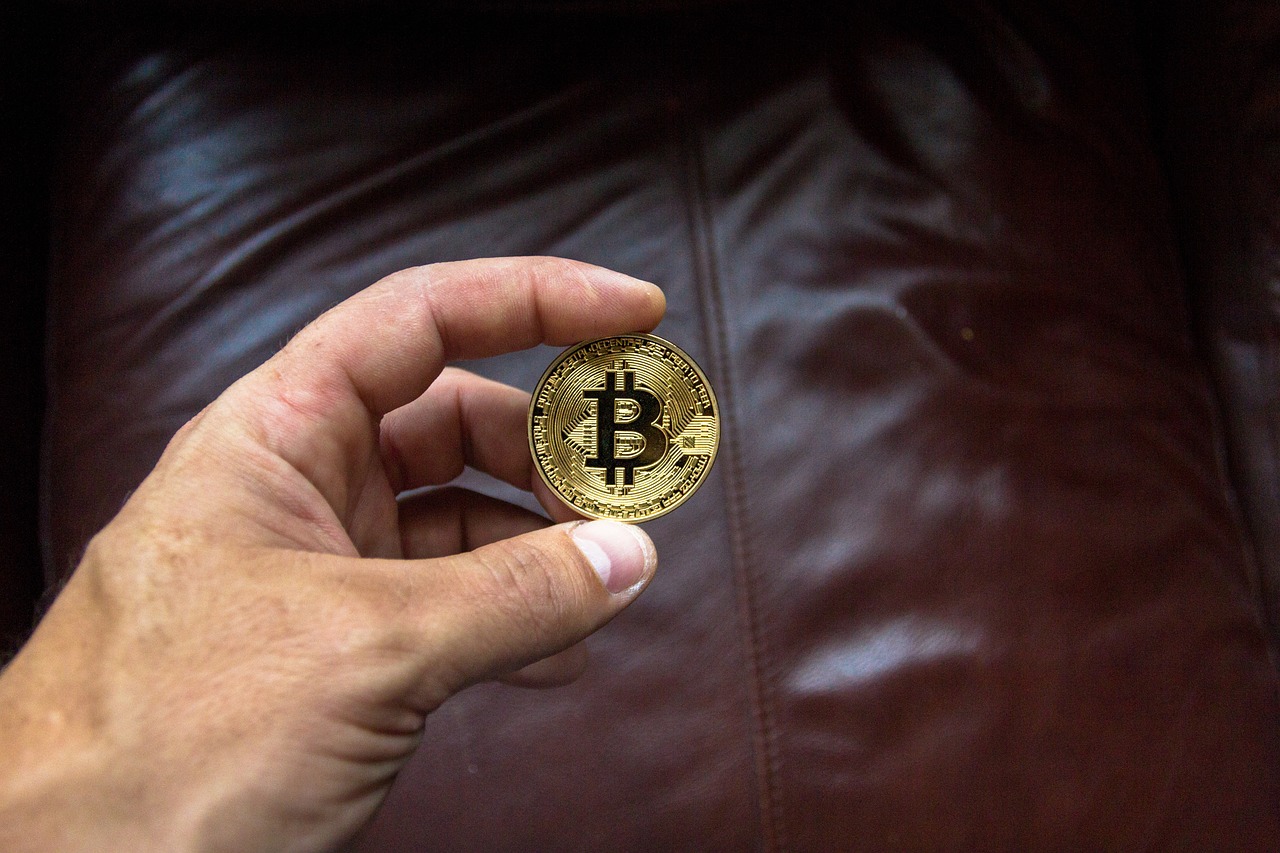
Understanding Tokenomics
Tokenomics is a term that combines "token" and "economics," capturing the essence of how cryptocurrencies function within their respective ecosystems. At its core, tokenomics encompasses the economic model behind a cryptocurrency, focusing on aspects such as token supply, distribution, and incentives. This multifaceted approach is crucial for both investors and developers as it shapes the overall performance and sustainability of a cryptocurrency.
In the vast and often volatile world of cryptocurrencies, understanding tokenomics can be the difference between a successful investment and a costly mistake. Just like how a solid business plan is essential for a startup, a well-thought-out tokenomics model is vital for a cryptocurrency project. It lays the groundwork for how tokens are created, distributed, and utilized, impacting everything from market demand to price stability.
One of the fundamental principles of tokenomics is the token supply, which refers to the total number of tokens that will ever exist. This supply can be fixed or inflationary, significantly influencing a token's perceived value. For instance, a cryptocurrency with a fixed supply may create a sense of scarcity, driving up demand as more investors seek to acquire it. On the other hand, inflationary tokens can lead to a gradual devaluation, as the supply increases over time.
Another critical aspect is the distribution mechanism. How tokens are distributed can affect market performance and investor sentiment. For example, if a large percentage of tokens are held by a small group of individuals, it may raise concerns about centralization and manipulation, leading to decreased trust among potential investors. Conversely, a well-distributed token can foster a sense of community and shared ownership, enhancing overall engagement.
In addition to supply and distribution, the utility of a token plays a significant role in its tokenomics. Utility defines how a token is used within its ecosystem, whether for transactions, governance, or accessing certain features. A token with strong utility is more likely to see sustained demand, as users will have tangible reasons to hold and use it. This concept can be likened to a currency; the more people find it useful for transactions, the more valuable it becomes.
In summary, understanding tokenomics is essential for anyone involved in the cryptocurrency space. It provides insights into how tokens function, their potential for growth, and the factors that can influence their market performance. By grasping the nuances of tokenomics, investors and developers alike can make more informed decisions, ultimately navigating the complex crypto landscape with greater confidence.
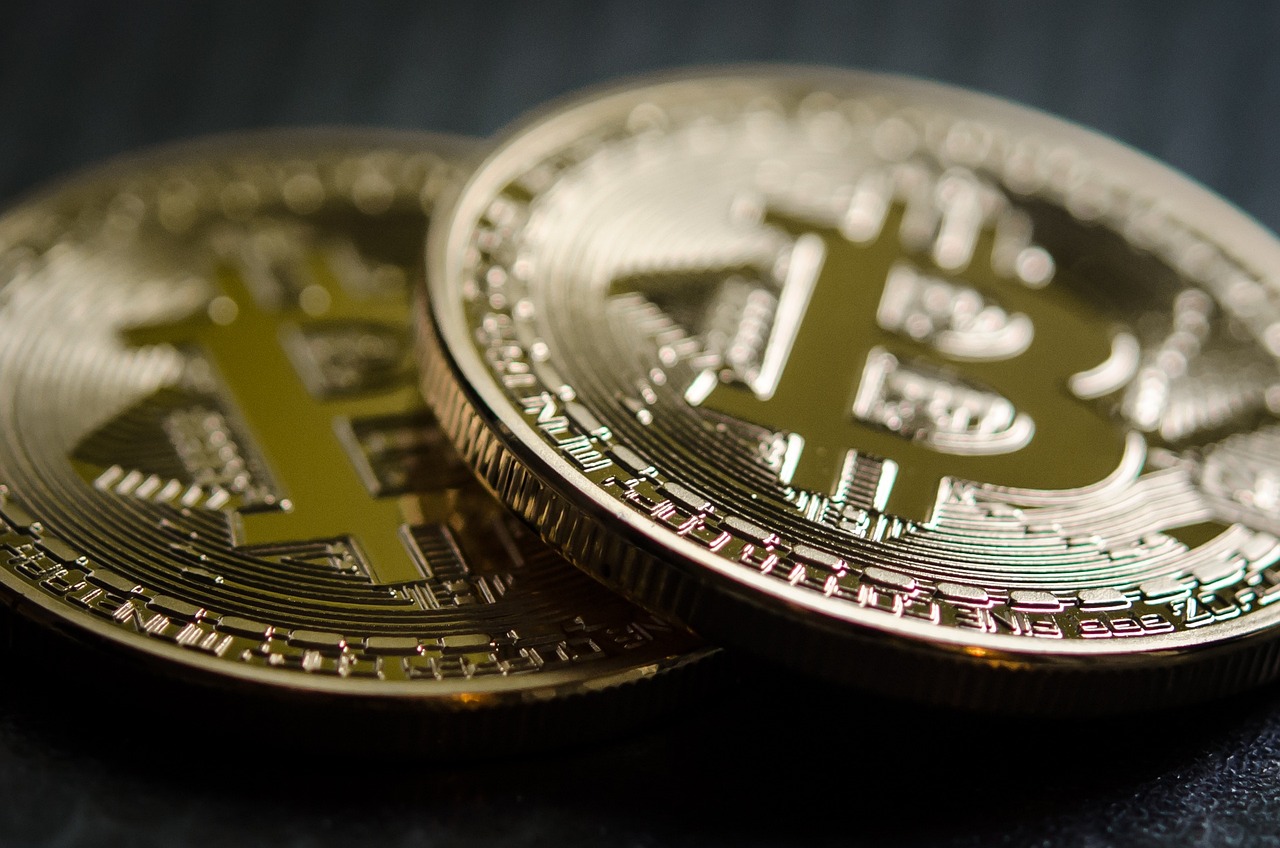
Key Components of Tokenomics
Tokenomics is a term that combines "token" and "economics," and it plays a pivotal role in the cryptocurrency ecosystem. Understanding the key components of tokenomics is essential for investors, developers, and enthusiasts alike. At its core, tokenomics encompasses several critical elements, including token supply, utility, and distribution mechanisms. Each of these components significantly influences a token's value and its behavior in the market.
First, let’s talk about token supply. This refers to the total number of tokens that will ever exist for a particular cryptocurrency. The supply can be fixed or inflationary. A fixed supply means that there will be a capped number of tokens, akin to a limited edition collectible. This scarcity can drive demand, especially when interest in the token grows. On the other hand, an inflationary supply allows for the continuous creation of new tokens, which can lead to dilution of value over time. This dynamic is crucial for investors to understand, as it directly correlates with potential price movements and market stability.
Another essential aspect of tokenomics is the utility of a token. Utility defines the specific use cases within a project or ecosystem. For instance, some tokens may serve as a medium of exchange, while others might provide access to exclusive features or services. A strong utility can significantly drive demand, as users are more likely to buy and hold a token if it has practical applications. When evaluating a token, consider the following questions: What problem does it solve? How integral is it to the project's success? If a token lacks utility, its value may plummet, regardless of its supply dynamics.
Next, we have distribution mechanisms. This refers to how tokens are distributed among users and investors. Different projects might adopt various strategies such as initial coin offerings (ICOs), airdrops, or staking rewards. These distribution methods can affect market behavior significantly. For example, a well-planned ICO can create a buzz and lead to a surge in demand, while poorly executed distribution can lead to market distrust and volatility. Understanding how a token is distributed can provide insights into its potential for long-term success.
To summarize, the key components of tokenomics—token supply, utility, and distribution mechanisms—are interrelated and crucial for determining a token's market performance. Investors must consider these factors when evaluating potential investments. A token with a limited supply, strong utility, and a well-thought-out distribution strategy is more likely to succeed in the competitive cryptocurrency landscape.
- What is tokenomics? Tokenomics refers to the economic model behind a cryptocurrency, including its supply, distribution, and incentives.
- Why is token supply important? Token supply determines scarcity and can influence demand and price movements in the market.
- How does utility affect a token's value? The utility of a token defines its practical applications, driving demand and investment interest.
- What are distribution mechanisms? These are strategies used to allocate tokens to users, impacting market behavior and investor trust.

Token Supply Dynamics
When diving into the world of cryptocurrency, one of the most crucial concepts to grasp is . This encompasses everything from the total amount of tokens available to the inflation rates and scarcity that can drastically influence a token's market behavior. Imagine you're at a concert, and there are only a limited number of tickets available. The fewer tickets there are, the more valuable they become, right? This analogy holds true in the crypto world as well, where the dynamics of supply can create a rollercoaster of price movements.
At its core, token supply dynamics can be broken down into three main factors: the total supply of tokens, the rate at which new tokens are introduced, and the mechanisms that control scarcity. Understanding these elements is essential for investors who want to gauge potential price movements and overall market stability. For instance, if a project has a fixed supply of tokens, this means that no more tokens can be created once the maximum limit is reached. This can create a sense of scarcity that drives demand, much like a limited-edition sneaker release.
On the other hand, an inflationary model allows for the continuous creation of new tokens over time. While this might seem beneficial for maintaining liquidity, it can also dilute the value of existing tokens, leading to potential investor dissatisfaction. This is where understanding the balance becomes crucial. Investors must ask themselves: will the ongoing supply increase outweigh the demand for the token? If the answer is no, then the market could face downward pressure.
| Supply Type | Description | Impact on Value |
|---|---|---|
| Fixed Supply | Tokens are capped at a certain amount. | Increases scarcity, potentially driving up value. |
| Inflationary Supply | New tokens are continuously created. | Can dilute existing token value, affecting market sentiment. |
Another fascinating aspect of token supply dynamics is the concept of burn mechanisms. This is where tokens are intentionally removed from circulation, effectively reducing the total supply. Think of it like a fire that consumes wood; the more wood you burn, the less you have left. In the crypto realm, this can enhance the perceived value of the remaining tokens, making them more attractive to investors. Burn mechanisms can create buzz in the community, leading to an increase in demand as people scramble to get their hands on a dwindling resource.
In summary, understanding token supply dynamics is essential for anyone looking to navigate the cryptocurrency markets effectively. Whether you're an investor trying to predict price movements or a developer planning a new project, grasping the intricacies of supply—how it is controlled and manipulated—can significantly influence your success in this volatile landscape. So, the next time you hear about a new token launch, remember to dig deeper into its supply dynamics; it could be the key to unlocking its potential.
- What is token supply? Token supply refers to the total number of tokens that exist for a particular cryptocurrency.
- What is the difference between fixed and inflationary supply? Fixed supply means no more tokens can be created after a certain limit, while inflationary supply allows for the continuous creation of new tokens.
- How do burn mechanisms work? Burn mechanisms involve removing tokens from circulation, thereby reducing the total supply and potentially increasing the value of remaining tokens.
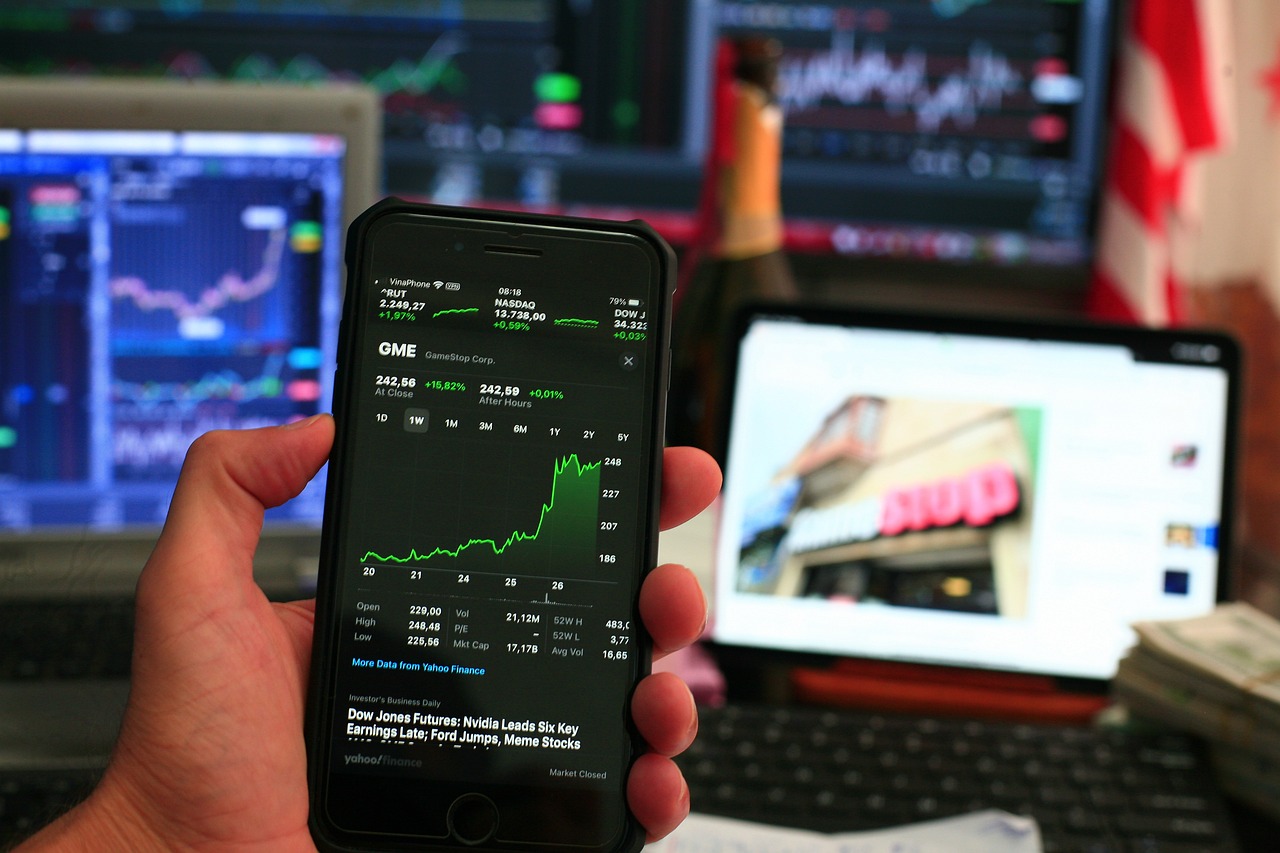
Fixed vs. Inflationary Supply
When diving into the world of cryptocurrencies, one of the most crucial factors to consider is the token supply. Tokens can generally be categorized into two main types: fixed supply and inflationary supply. Understanding the differences between these two models is essential for any investor or developer looking to navigate the crypto landscape effectively.
A fixed supply model means that there is a predetermined number of tokens that will ever exist. Think of it like a limited edition collectible item; once they're gone, they're gone! This scarcity often leads to a perception of value, as demand can outstrip supply. For instance, Bitcoin has a fixed supply cap of 21 million coins. As more people adopt and invest in Bitcoin, the limited supply can lead to increased demand, driving up its price over time. This model can create a sense of stability and predictability in a volatile market, making it appealing to investors.
On the other hand, an inflationary supply model allows for a continuous increase in the number of tokens over time. This means that new tokens are regularly minted or created, much like how central banks print more money. While this can provide a steady supply of tokens for users and developers, it can also lead to concerns about devaluation. As more tokens enter circulation, the value of each individual token may decrease if demand does not keep pace. Projects like Ethereum initially adopted an inflationary model to incentivize network participation and development, but this approach can create uncertainty among investors.
To illustrate the impact of these two models, consider the following table:
| Feature | Fixed Supply | Inflationary Supply |
|---|---|---|
| Token Creation | Limited to a set number | Continually increases over time |
| Value Stability | Potentially more stable due to scarcity | Can lead to devaluation if not managed |
| Investor Sentiment | Often viewed positively | Can create uncertainty and skepticism |
| Examples | Bitcoin, Litecoin | Ethereum (initially), Dogecoin |
Ultimately, the choice between a fixed and inflationary supply model can significantly influence a token's market performance and investor behavior. While fixed supply tokens can create a sense of security and predictability, inflationary tokens can offer flexibility and adaptability in a rapidly changing market. As an investor, it's essential to understand these dynamics and consider how they align with your investment strategy.
In conclusion, whether you lean towards fixed or inflationary supply tokens, the key is to do your homework. Analyze the underlying principles and market trends, and you'll be better equipped to make informed decisions in the ever-evolving world of cryptocurrencies.
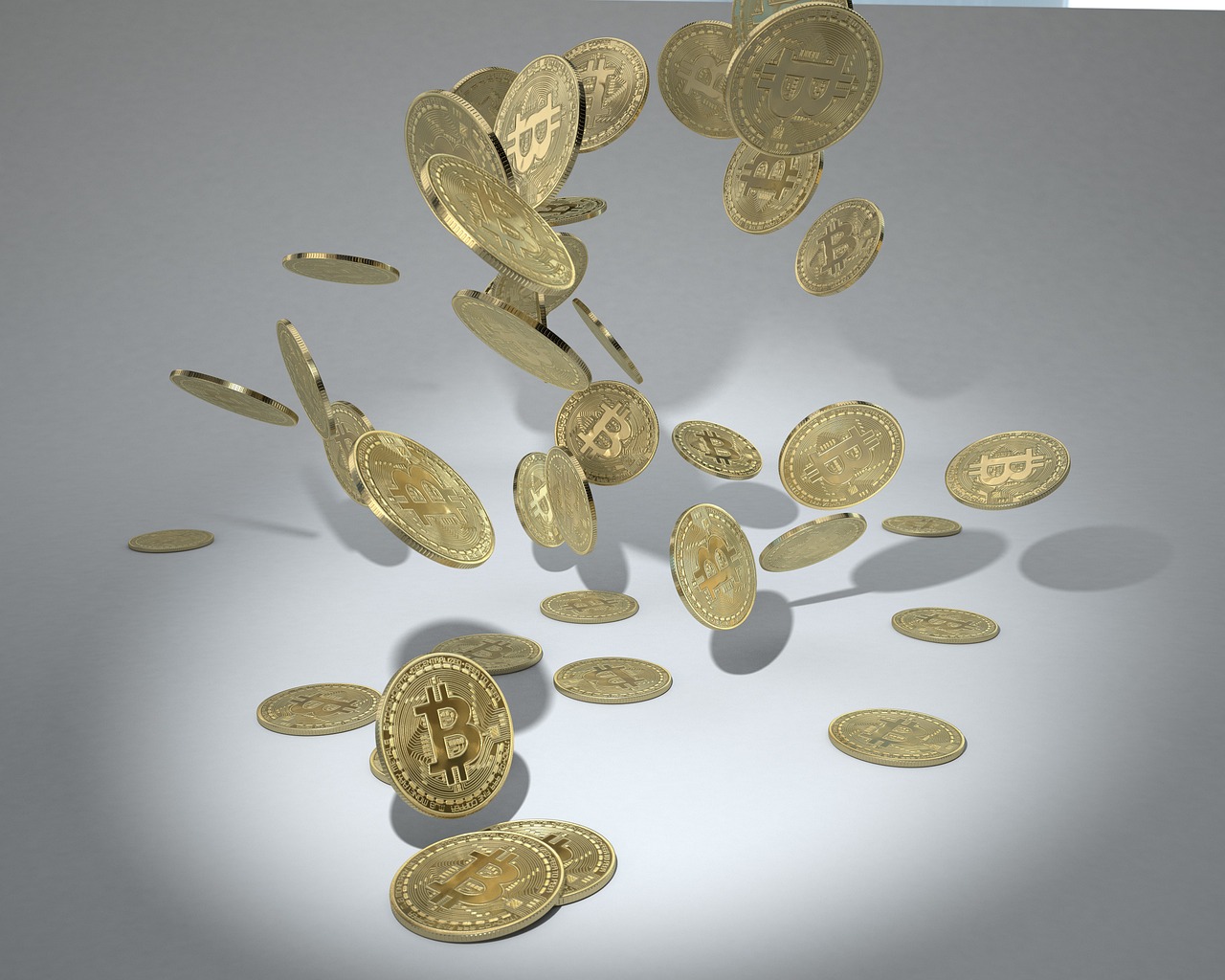
Burn Mechanisms
Burn mechanisms are fascinating tools in the world of cryptocurrency, designed to reduce the total supply of a token over time. Imagine a digital bonfire where tokens are tossed in, never to be seen again. This process not only enhances the scarcity of the remaining tokens but can also lead to an increase in their value. Why does this happen? Well, the basic economic principle of supply and demand comes into play here. When the supply of a token decreases, while the demand remains constant or increases, the price typically rises.
There are several methods through which tokens can be burned, and understanding these can give investors a clearer picture of a project's potential. Some common burn mechanisms include:
- Transaction Fee Burning: A portion of transaction fees is burned with each transaction, gradually reducing the overall supply.
- Scheduled Burns: Projects may implement regular burn events, where a predetermined amount of tokens is burned at specific intervals.
- Buyback and Burn: The project team uses profits to buy back tokens from the market and then burns them, creating a dual effect of increasing demand and reducing supply.
For example, the popular cryptocurrency Binance Coin (BNB) employs a buyback and burn strategy, where Binance uses 20% of its profits each quarter to buy back BNB and burn it. This consistent reduction in supply has contributed to BNB's price appreciation over time, making it a prime example of how effective burn mechanisms can be.
Furthermore, burn mechanisms can also serve as a marketing strategy, generating buzz and excitement within the community. Announcing a burn event can lead to increased trading volumes and heightened interest from potential investors. It’s a bit like a surprise sale in a retail store; everyone wants to grab the best deals before they disappear!
However, while burn mechanisms can create positive market sentiment and enhance token value, they are not without risks. If a project relies too heavily on burning to maintain interest, it may indicate underlying issues with demand or utility. Therefore, investors should always consider the broader context of a token's use case and market dynamics.
In conclusion, burn mechanisms are a powerful aspect of tokenomics that can significantly influence a token's market performance. By creating scarcity and driving demand, they play a crucial role in how investors perceive value in the cryptocurrency space.
- What is a burn mechanism? A burn mechanism is a process where a certain amount of cryptocurrency tokens are permanently removed from circulation, reducing the total supply.
- How does burning tokens affect their value? Burning tokens can increase their value by creating scarcity; as the supply decreases, demand may increase, leading to price appreciation.
- Are burn mechanisms common in all cryptocurrencies? No, not all cryptocurrencies use burn mechanisms. It varies by project and their specific tokenomics strategy.
- Can burning tokens be harmful? While burning can be beneficial, over-reliance on it without solid demand can signal problems within the project.

Utility and Use Cases
When it comes to the world of cryptocurrencies, utility is a game-changer. It answers the fundamental question: "What can I do with this token?" The utility of a token defines its purpose within a project or ecosystem, and this can significantly drive demand and enhance market performance. Think of it like a Swiss Army knife; the more tools it has, the more valuable it becomes. If a token serves a specific function that users find beneficial, it’s likely to see increased adoption and, consequently, a rise in market value.
For instance, consider tokens that are used for transaction fees, staking, or accessing specific services within a platform. These use cases create a direct relationship between the token's utility and its demand. If a token can be used to unlock premium features, access exclusive content, or participate in governance decisions, it becomes much more than just a speculative asset. It transforms into a vital component of the ecosystem, encouraging users to hold onto it rather than sell it off at the first sign of profit.
Moreover, the diversity of use cases can also enhance a token's resilience in the market. For example, tokens that serve multiple functions—such as facilitating transactions, providing access to services, and enabling governance—tend to perform better. They create a robust ecosystem where demand is driven by various factors. Here are some common use cases that highlight the versatility of tokens:
- Transaction Fees: Many platforms require tokens to pay for transactions, which creates a constant demand.
- Staking: Tokens can be staked to earn rewards, encouraging users to hold onto their tokens.
- Access to Services: Certain tokens grant users access to exclusive features or content.
- Governance: Tokens can empower holders to vote on project decisions, aligning interests between developers and the community.
In addition, the community's perception of a token's utility can have a profound impact on its market performance. If users believe that a token has strong real-world applications, they are more likely to invest and hold it long-term. This psychological aspect plays a crucial role in shaping market sentiment. For instance, projects that actively promote their use cases and demonstrate tangible benefits often see a surge in interest and investment.
It’s also essential to consider how the utility of a token can evolve over time. As new technologies emerge and market demands shift, the use cases for a token can expand or change. This adaptability can be a significant advantage, allowing projects to remain relevant and valuable in a rapidly changing landscape. Therefore, both investors and developers should keep a close eye on the utility aspect of tokenomics, as it can be a strong indicator of a token's potential success.
In conclusion, the utility of a token is not just about its immediate applications but also about its capacity to adapt and grow within its ecosystem. As more people recognize the importance of utility in tokenomics, we can expect to see a more informed investment landscape where the focus shifts from mere speculation to understanding the real-world applications and benefits of cryptocurrencies. This shift could lead to a more stable market, where value is derived from genuine use rather than hype and speculation.
- What is token utility? Token utility refers to the specific functions and purposes a token serves within its ecosystem, such as transaction fees, staking, or access to services.
- Why is utility important for a token's value? Utility creates demand for the token, as users are more likely to hold tokens that provide tangible benefits, which can lead to increased market value.
- How can token utility evolve over time? As market demands and technologies change, the use cases for a token can expand, allowing it to remain relevant and valuable in the ecosystem.
- What are some examples of token use cases? Common use cases include transaction fees, staking rewards, access to exclusive services, and governance voting.

The Role of Governance Tokens
Governance tokens are a fascinating aspect of the cryptocurrency ecosystem that empower holders to play a significant role in shaping the direction and decisions of a project. Imagine being part of a community where your voice counts—this is precisely what governance tokens offer. By holding these tokens, investors can vote on critical issues such as protocol upgrades, fund allocations, or even changes in project leadership. This level of involvement not only aligns the interests of developers and the community but also fosters a sense of ownership among token holders.
One of the most compelling features of governance tokens is their ability to create a decentralized governance model. In traditional finance, decisions are often made by a select few, but in the world of cryptocurrencies, governance tokens democratize the decision-making process. This model encourages community engagement, as stakeholders are more likely to participate in discussions and voting when they know their input can lead to tangible changes. As a result, projects that incorporate governance tokens often see increased trust and loyalty from their user base, which can positively affect market performance.
Moreover, the voting power associated with governance tokens can significantly influence market sentiment. When major decisions are made—such as a new partnership or a shift in strategy—the reactions can ripple through the market. For instance, if a community votes in favor of a new feature that enhances the utility of a token, it can lead to an increase in demand, driving prices up. Conversely, if a decision is met with resistance or disapproval, it might trigger sell-offs, affecting the token's market performance negatively.
To illustrate this further, let’s consider a few notable governance tokens:
| Token | Project | Key Features |
|---|---|---|
| COMP | Compound | Allows users to vote on protocol upgrades and changes. |
| UNI | Uniswap | Enables holders to vote on governance proposals and liquidity incentives. |
| MKR | MakerDAO | Holders can vote on risk parameters and stability fees. |
As we can see, governance tokens not only empower users but also serve as a crucial mechanism for aligning the interests of all parties involved. They create a feedback loop where community input can lead to improvements in the project, which in turn can enhance token value and market performance. So, if you're an investor, understanding the governance model of a token can provide valuable insights into its potential for growth and stability.
In conclusion, governance tokens play a pivotal role in the cryptocurrency landscape, fostering community engagement and influencing market dynamics. They represent a shift from traditional, centralized decision-making processes to a more inclusive and democratic approach. As the crypto space continues to evolve, the importance of governance tokens will likely grow, making it essential for investors and developers alike to pay close attention to how they function within their respective ecosystems.

Decentralized Governance Models
Decentralized governance models are revolutionizing how decisions are made within the cryptocurrency ecosystem. Unlike traditional corporate structures where a small group of executives holds the reins, decentralized governance empowers the community to have a say in the direction of a project. This shift not only democratizes control but also fosters a sense of ownership among token holders, creating a more engaged and committed user base. Imagine a ship where every crew member has a voice in navigating the waters—this is the essence of decentralized governance.
In decentralized governance, decisions are often made through voting mechanisms that allow token holders to express their opinions on various proposals. This can range from funding allocations and protocol upgrades to changes in project direction. The beauty of this model lies in its ability to harness the collective wisdom of the community, which can lead to more innovative and effective solutions. However, it’s important to note that this system also comes with its own set of challenges, such as the risk of voter apathy and the potential for governance attacks where malicious actors attempt to manipulate the voting process.
To better understand how decentralized governance operates, let's consider a few key features:
- Voting Power: The weight of each vote can vary based on the number of tokens held, creating a system where larger stakeholders have more influence. This can lead to a more significant impact on the project's trajectory.
- Proposal Mechanisms: Community members can submit proposals for changes or initiatives, often requiring a certain threshold of support before being put to a vote. This encourages active participation and thoughtful contributions from the community.
- Transparency: Most decentralized governance models operate on blockchain technology, ensuring that all votes and proposals are publicly accessible. This transparency builds trust within the community and discourages manipulative practices.
As we delve deeper into the implications of decentralized governance, it’s crucial to recognize its potential impact on market performance. Projects that successfully implement decentralized governance can cultivate a loyal following, as community members feel more invested in the outcomes. This can lead to increased demand for the token, driving up its value and enhancing market stability. Conversely, if governance is poorly executed, it can result in fragmentation and discord within the community, ultimately affecting the project's longevity.
In summary, decentralized governance models are not just a trend; they represent a fundamental shift in how projects operate and engage with their communities. By decentralizing decision-making, projects can foster a culture of collaboration and trust, which can lead to improved market performance and a more resilient ecosystem. As we continue to explore the intricacies of tokenomics, it's clear that understanding these governance structures is essential for investors and developers alike.

Voting Power and Market Sentiment
The concept of voting power associated with governance tokens is a fascinating aspect of tokenomics that can significantly influence market sentiment. When holders of governance tokens are granted the ability to participate in decision-making processes, they feel a sense of ownership and responsibility towards the project's direction. This can create a positive feedback loop where active participation leads to increased trust and confidence among the community, which in turn can drive up the token's value.
Consider this: when a community is empowered to vote on critical issues—like protocol upgrades or fund allocations—they are more likely to feel invested in the project. This investment can manifest in various ways, such as holding onto their tokens longer or even purchasing more, anticipating that their decisions will lead to positive outcomes. Thus, the voting power of governance tokens not only shapes the project but also molds the market's perception of its viability and potential for growth.
Moreover, the outcomes of governance votes can lead to immediate market reactions. For instance, if a proposal is passed that enhances the utility of a token or addresses a critical issue within the ecosystem, the market may respond favorably, driving up the price. On the flip side, if a decision is made that the community perceives as unfavorable—like a controversial change in tokenomics—the sentiment can shift negatively, resulting in a sell-off. This dynamic illustrates how closely intertwined voting power and market sentiment are, creating a delicate balance that can lead to volatility.
To further understand this relationship, let's look at a few key factors that contribute to how voting power affects market sentiment:
- Community Engagement: Active participation in governance fosters a sense of belonging and loyalty among token holders.
- Transparency: Clear communication about governance processes can enhance trust and reduce fear of manipulation.
- Perceived Value: Decisions that align with community interests can boost the perceived value of the token, encouraging investment.
In essence, the voting power of governance tokens serves as a double-edged sword. While it can lead to increased engagement and positive market sentiment, it can also create volatility if the decisions made do not resonate with the broader community. Understanding this interplay is crucial for investors and developers alike, as it can provide insights into potential market movements and the overall health of a cryptocurrency project.
- What are governance tokens? Governance tokens are digital assets that grant holders the right to participate in decision-making processes within a blockchain project.
- How does voting power affect token value? Voting power can influence market sentiment and investor confidence, impacting the overall value of a token based on community decisions.
- Can poor governance decisions lead to market crashes? Yes, unfavorable decisions made through governance votes can lead to negative market reactions and decreased token value.

Market Psychology and Tokenomics
When we talk about tokenomics, it's easy to get lost in the numbers: supply, demand, utility, and distribution. But what about the human element? Market psychology is a powerful force that can dramatically influence how investors perceive a cryptocurrency and, ultimately, its market performance. Just like a roller coaster, the emotional highs and lows of the market can lead to unexpected twists and turns, making it essential for investors to understand the psychological factors at play.
At the heart of market psychology is the concept of investor sentiment. This refers to the overall attitude of investors towards a particular asset or market. When sentiment is positive, investors are more likely to buy, driving prices up. Conversely, negative sentiment can lead to panic selling, causing prices to plummet. This emotional roller coaster is often driven by news, social media trends, and community discussions, which can either bolster or undermine confidence in a token's value.
Moreover, the availability heuristic plays a significant role in how investors make decisions. This psychological principle suggests that people tend to rely on immediate examples that come to mind when evaluating a situation. For instance, if a cryptocurrency experiences a sudden surge in price due to hype or positive news, investors may quickly jump on the bandwagon, assuming that the upward trend will continue. This can create a feedback loop where rising prices attract more buyers, further inflating the token's value.
Additionally, the fear of missing out (FOMO) can drive irrational behavior in the market. When investors see others profiting from a token, they may feel compelled to invest, even if they haven't done their due diligence. This phenomenon can lead to inflated prices and subsequent corrections, as many investors may panic and sell when the market turns against them. Understanding this psychological aspect can help investors make more informed decisions rather than succumbing to emotional impulses.
On the flip side, fear, uncertainty, and doubt (FUD) can have a devastating impact on token performance. Negative news, whether factual or speculative, can spread like wildfire through social media and online forums, leading to widespread panic selling. This is where tokenomics comes into play; a well-structured tokenomics model can help mitigate the effects of FUD by providing transparency and fostering trust among investors. For instance, if a project has a clear and fair distribution model, it can instill confidence in the community, reducing the likelihood of panic during turbulent times.
Ultimately, understanding the interplay between market psychology and tokenomics is crucial for anyone looking to navigate the cryptocurrency landscape. By recognizing how emotions and perceptions influence market behavior, investors can better position themselves to make informed decisions. It's not just about the numbers; it's about the stories we tell ourselves and each other in the ever-evolving world of crypto.
- What is the impact of market psychology on cryptocurrency prices?
Market psychology can lead to significant price fluctuations based on investor sentiment, often causing prices to rise or fall rapidly. - How does tokenomics influence investor behavior?
A well-designed tokenomics model can enhance trust and confidence, encouraging positive market sentiment and reducing panic during downturns. - What role does social media play in market psychology?
Social media can amplify both positive and negative sentiments, influencing investor decisions and market trends.

Real-World Examples of Tokenomics in Action
When it comes to understanding the impact of tokenomics on market performance, real-world examples serve as the best teachers. They provide valuable insights into how different economic models can influence investor behavior and the overall success of a cryptocurrency project. Let's dive into a few noteworthy cases that highlight the effectiveness of various tokenomics strategies.
One prime example is Ethereum, which has revolutionized the concept of utility in the crypto space. Ethereum's token, ETH, is not just a currency; it serves as the fuel for executing smart contracts and decentralized applications (dApps) on its platform. This inherent utility has driven demand, contributing to its substantial market capitalization. As more developers build on Ethereum, the need for ETH increases, demonstrating how a well-structured tokenomics model can lead to sustained growth.
Another fascinating case is Binance Coin (BNB). Initially launched as a utility token for trading fee discounts on the Binance exchange, BNB's tokenomics has evolved significantly. The Binance team employs a burn mechanism, where they periodically buy back and burn a portion of the total supply. This systematic reduction in supply not only enhances scarcity but also creates a sense of urgency among investors, driving demand and positively impacting BNB's price. The success of this model illustrates how effective tokenomics can create a win-win situation for both the project and its investors.
On the flip side, we have the case of Bitconnect, which is often cited as a cautionary tale. Bitconnect's tokenomics promised high returns through a lending program, but it lacked transparency and a sustainable economic model. Ultimately, the project collapsed, leading to massive losses for investors. This example highlights the importance of sound tokenomics; without a solid foundation, even the most ambitious projects can fail spectacularly.
To further illustrate the impact of tokenomics, let's look at a comparison of successful and unsuccessful projects in a table format:
| Project | Tokenomics Model | Outcome |
|---|---|---|
| Ethereum | Utility-based, strong demand for ETH | Successful, high market capitalization |
| Binance Coin | Burn mechanism, utility for trading fees | Successful, increasing value |
| Bitconnect | Unsustainable lending model | Failure, significant investor losses |
In addition to these examples, there are numerous other projects showcasing innovative tokenomics strategies. For instance, Chainlink has created a decentralized oracle network that allows smart contracts to securely interact with real-world data. Its token, LINK, is essential for accessing the network, which has driven demand and contributed to its robust market performance.
As we analyze these real-world examples, it becomes evident that tokenomics is not just a buzzword; it is a fundamental aspect that can dictate the success or failure of a cryptocurrency project. By understanding the various models and their implications, investors can make more informed decisions and developers can design better projects that align with market needs.
In conclusion, the landscape of cryptocurrency is filled with lessons learned from both successful and failed projects. By studying these real-world examples, we can gain a deeper appreciation for the role of tokenomics in shaping market performance and investor sentiment.
- What is tokenomics? Tokenomics refers to the economic model of a cryptocurrency, including its supply, distribution, and incentives.
- Why is tokenomics important? It influences a token's value, market behavior, and investor interest, making it crucial for the success of a project.
- How can I evaluate a project's tokenomics? Look for details on supply dynamics, utility, distribution methods, and any burn mechanisms in place.
- What are governance tokens? Governance tokens give holders the power to influence decisions within a project, aligning the interests of developers and the community.
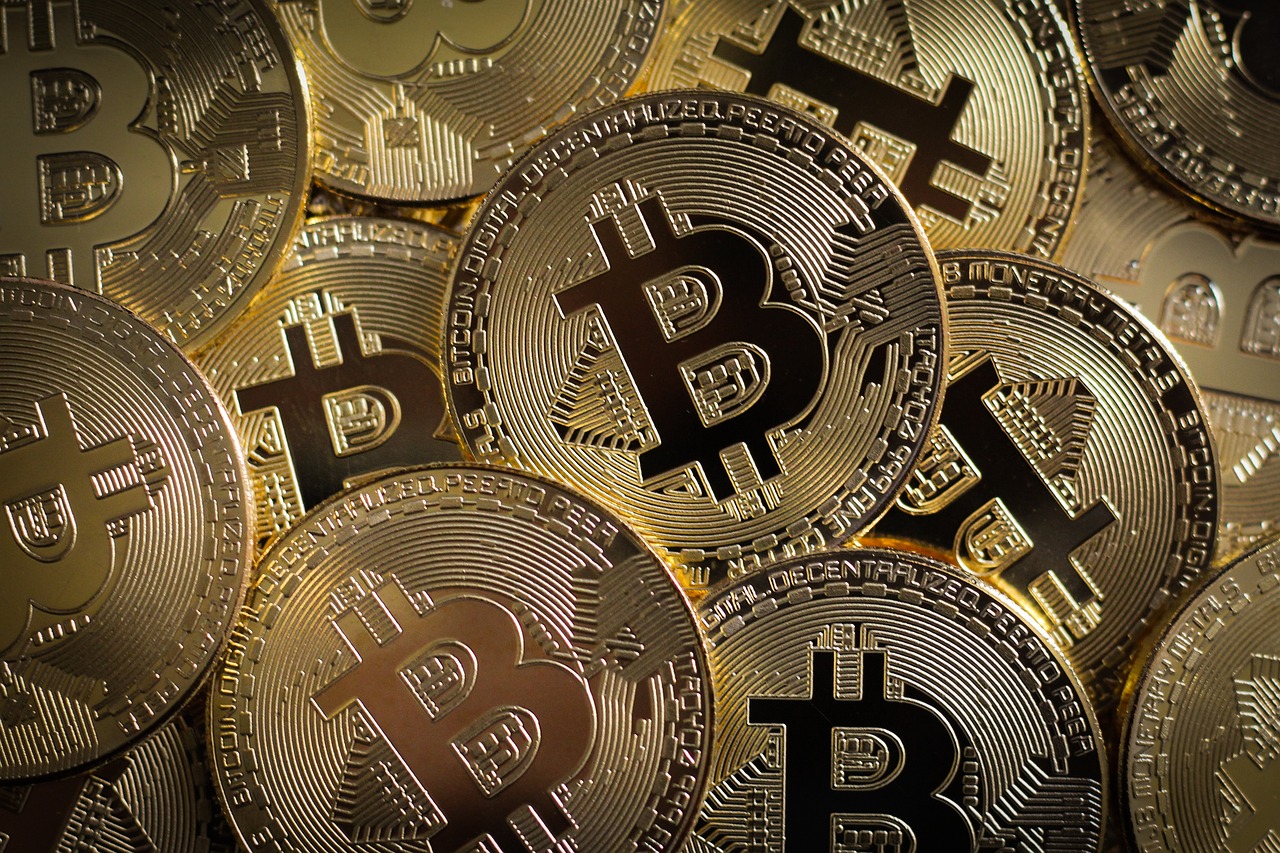
Future Trends in Tokenomics
The world of cryptocurrency is constantly evolving, and with it, the concept of tokenomics is undergoing significant transformations. As we look ahead, several key trends are emerging that promise to reshape how tokens function within their ecosystems and how investors perceive their value. One of the most exciting developments is the rise of decentralized finance (DeFi) applications, which are integrating complex tokenomics to create more robust financial systems. These platforms are not just about trading; they offer lending, borrowing, and yield farming, all driven by innovative token structures that incentivize user participation.
Another noteworthy trend is the increasing focus on sustainability within tokenomics. As environmental concerns grow, projects are beginning to incorporate eco-friendly practices into their token models. This includes using less energy-intensive consensus mechanisms or implementing carbon offsetting strategies. As a result, tokens that prioritize sustainability may gain a competitive edge, appealing to a more socially conscious investor base.
Moreover, the integration of non-fungible tokens (NFTs) into tokenomics is set to expand. NFTs are not just about digital art anymore; they are being utilized in various sectors, including gaming, real estate, and entertainment. This diversification is leading to innovative token models where NFTs represent ownership or access to unique assets, creating new revenue streams and enhancing user engagement. The potential for cross-platform utility is immense, and projects that can effectively leverage this trend are likely to see increased market interest.
In addition to these trends, we are witnessing a shift towards community-driven tokenomics. Projects are increasingly prioritizing community involvement in decision-making through governance tokens. This trend not only fosters a sense of ownership among holders but also aligns the interests of developers and users. As more projects adopt decentralized governance models, we can expect to see a rise in community-led initiatives that directly influence tokenomics, impacting market performance and investor sentiment.
To illustrate these trends further, let's take a look at a few examples of projects that are leading the way:
| Project | Trend | Description |
|---|---|---|
| Uniswap | DeFi Integration | Utilizes liquidity pools to allow users to trade tokens without intermediaries. |
| Chia | Sustainability | Focuses on eco-friendly blockchain technology, using less energy than traditional mining. |
| Axie Infinity | NFT Utilization | Combines gaming with blockchain, allowing players to earn tokens through gameplay. |
| DAOstack | Community Governance | Enables decentralized governance through community voting on project decisions. |
As we move further into the future, the importance of regulatory compliance in tokenomics cannot be overstated. Governments around the world are beginning to establish clearer guidelines for cryptocurrencies, which will inevitably influence token design and functionality. Projects that proactively adapt to these regulations will likely gain a significant advantage in the market, fostering trust and stability among investors.
In conclusion, the future of tokenomics is bright and filled with potential. As these trends develop, they will not only influence how tokens are created and utilized but also how investors approach the cryptocurrency market. Staying informed and adaptable will be crucial for both developers and investors as they navigate this ever-changing landscape.
- What is tokenomics? Tokenomics refers to the economic model behind a cryptocurrency, including its supply, distribution, and incentives.
- Why is tokenomics important? It is crucial as it determines a token's value, market behavior, and overall success within its ecosystem.
- How do governance tokens work? Governance tokens allow holders to participate in decision-making processes, influencing the project's direction and policies.
- What are some trends in tokenomics? Key trends include the rise of DeFi, sustainability efforts, NFT integration, and community-driven governance.
Frequently Asked Questions
- What is tokenomics?
Tokenomics is the study of the economic model behind a cryptocurrency. It encompasses aspects like supply, distribution, and incentives, which are crucial for understanding how a token operates within its ecosystem. Think of it as the blueprint that dictates how a token behaves in the marketplace.
- Why is token supply important?
The total supply of tokens directly affects their value and market behavior. A fixed supply can create scarcity, while an inflationary model might lead to price depreciation over time. Understanding these dynamics helps investors make informed decisions about potential price movements.
- What are burn mechanisms?
Burn mechanisms are processes that permanently remove a certain amount of tokens from circulation, effectively reducing the total supply. This can enhance scarcity and potentially increase the token's value over time, making it an important strategy for many projects.
- How do governance tokens work?
Governance tokens give holders the power to participate in decision-making processes for a project. This involvement aligns the interests of developers and the community, fostering a sense of ownership and trust, which can positively influence market performance.
- What role does market psychology play in tokenomics?
Market psychology significantly affects how tokenomics is perceived. Factors like fear, greed, and overall sentiment can drive investor behavior, impacting market trends and the performance of tokens. Understanding these psychological elements can be key to navigating the crypto landscape.
- Can you provide examples of successful tokenomics?
Absolutely! Many projects have thrived due to well-structured tokenomics. For instance, Ethereum's model encourages usage through gas fees, while Binance Coin utilizes a burn mechanism that has helped increase its value. Analyzing these case studies can provide valuable insights into effective strategies.
- What are the future trends in tokenomics?
The landscape of tokenomics is always evolving. Emerging trends include decentralized finance (DeFi) innovations, enhanced governance models, and the integration of NFTs. Keeping an eye on these developments can help investors stay ahead of the curve and make informed decisions.



















